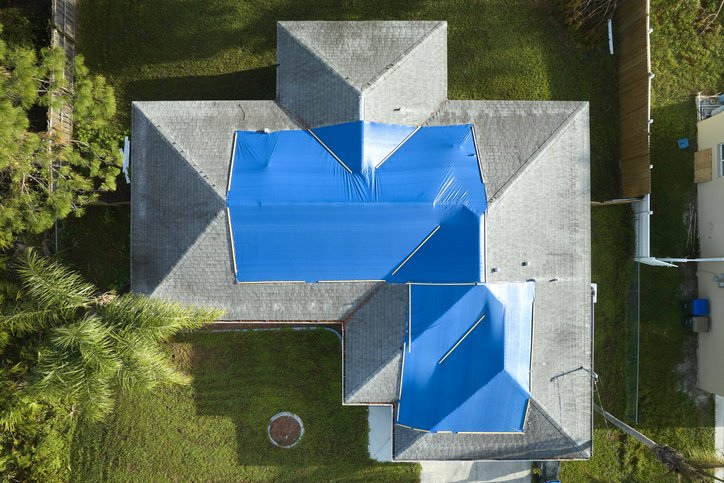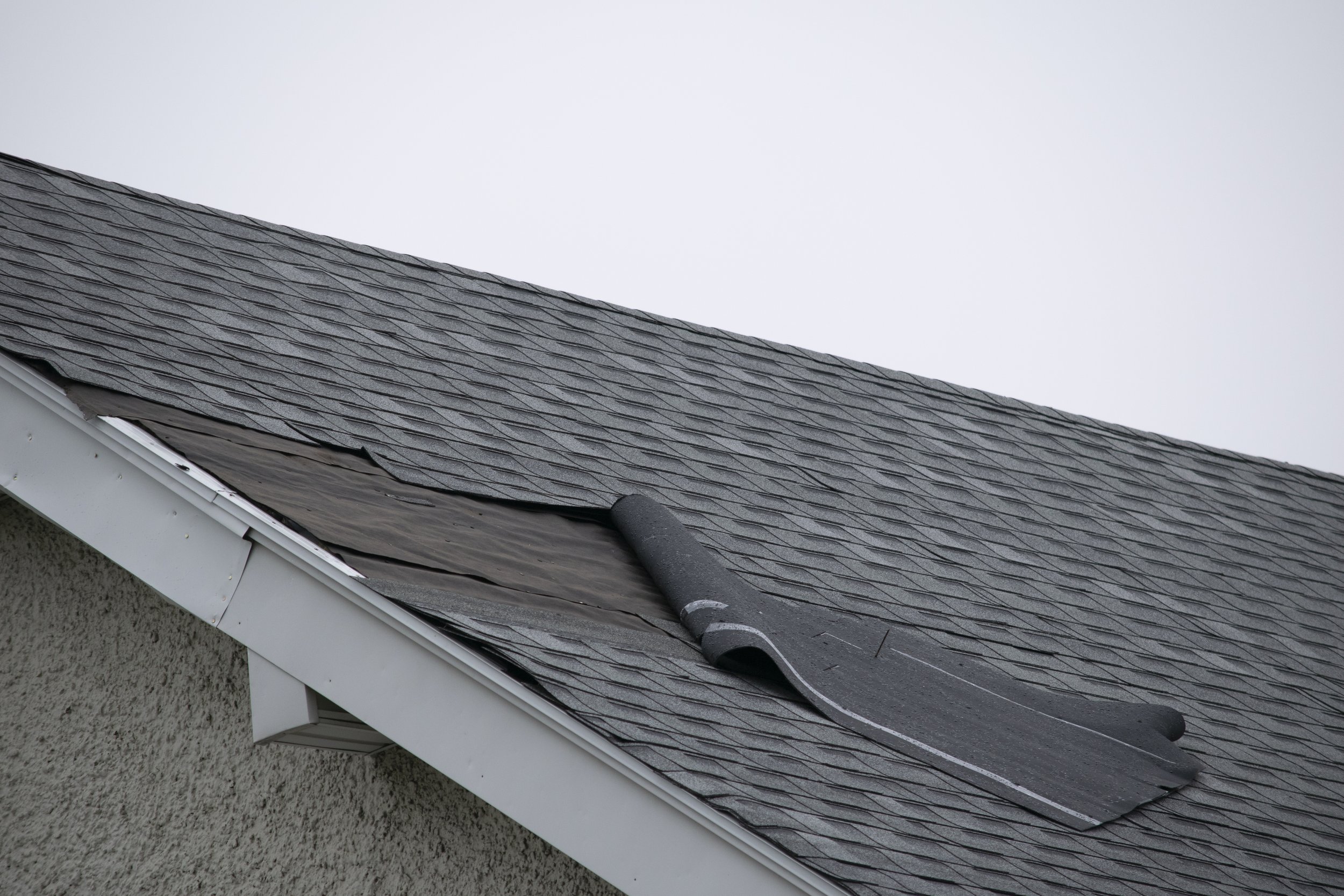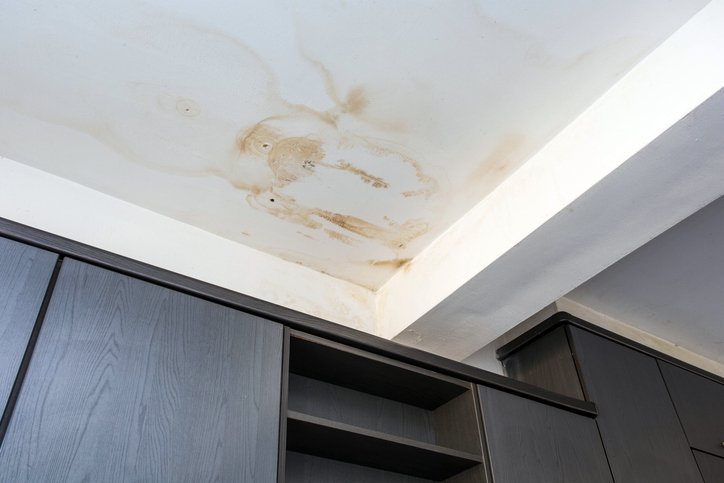
Roof Repair Contractor in Atlanta Roofing Storm Damage
Secure. Superior. Summit.
At Summit Roofing, we understand the stress and disruption that storm damage can cause. It is crucial to contact your insurance company for filing a claim and documenting damage.
Our expert team is dedicated to providing prompt and reliable roofing storm damage repair in Atlanta to restore your home’s safety and integrity. Hiring a professional roofing contractor ensures that storm damage repairs are handled with the highest level of expertise and experience.
Types of Storm Damage Addressed
-
Hail Damage 🧊
Hailstones can cause dents, cracks, and punctures in your roof shingles and other roofing materials. Our team assesses and repairs hail damage, maintaining your roof’s protection against the elements.
-
Water Damage 🌧️
Heavy rains can lead to leaks and water intrusion, which can damage your home’s interior and structure. We promptly fix water damage to safeguard your home.
-
Tree or Debris Damage 🌳
Strong winds can cause trees and other debris to fall on your roof, leading to significant structural damage. We repair impact damage, ensuring your roof is restored to its original condition.
-
Shingle Damage 🛠️
Storms can cause shingles to crack, dent, peel, or tear, leading to potential water ingress. Our detailed inspections and repairs ensure your shingles are in top condition.
-
Missing Shingles 🏚️
High winds can cause missing roof shingles, leaving gaps that can lead to leaks. We replace missing shingles to maintain the integrity of your roof.
-
Metal Roof Damage 🏠
Hail can damage metal roofs, causing dents and holes that lead to leaks. We repair and restore metal roofs, ensuring they remain functional and durable.
24/7 Emergency Services
Emergency Tarping ⏱️
Our quick tarping services provide immediate protection against further damage until permanent repairs can be made.
Rapid Response 🚨
Our team is available 24/7 to respond to urgent storm damage issues, ensuring your home is quickly secured and repaired.
Our Process For Roofing Storm Damage Repair in Atlanta
-
We start with a free roof inspection for your Atlanta home to assess the extent of the damage and determine the best course of action. It is crucial to have a professional roofing contractor perform this initial assessment to ensure all storm-related damage is identified.
-
You’ll receive a transparent and detailed estimate for the repair work, so you know exactly what to expect.
-
Our skilled technicians perform the repairs using high-quality materials, ensuring lasting results. In cases of extensive damage, a roof replacement might be necessary to restore the integrity of your home.
-
We conduct a thorough final inspection to ensure all repairs meet our high standards.
-
We follow up to ensure your satisfaction and provide tips for maintaining your roof.
Benefits of Choosing Summit for Roofing Storm Damage Repairs in Atlanta
Experienced Team: Our team is highly trained and experienced in all types of storm damage repairs.
Quality Materials: We use only durable and high-quality roofing materials.
Local Expertise: We understand the unique challenges of Georgia’s climate and tailor our services accordingly.
Customer-Centric Approach: We are committed to clear communication and customer satisfaction.
Insurance Assistance: We help you navigate the insurance claim process to ensure you receive the coverage you deserve.
Professional Roofing Company: Hiring a professional roofing company in Atlanta for roofing storm damage repairs ensures that your project will be handled by experts with the necessary experience and qualifications.
Hear It from Our Clients
At Summit Roofing, we pride ourselves on exceeding expectations. But don't just take our word for it—listen to our clients!
Protect Your Home with the Experts at Summit Roofing in Atlanta for Roofing Storm Damage Repairs
Don't let storm damage compromise the safety and integrity of your home. At Summit Roofing, our dedicated team is ready to provide fast, reliable, and high-quality storm damage roof inspections and repair services in Atlanta. We understand the urgency and stress that comes with storm damage, and we're here to make the repair process as seamless as possible.
5 Signs of Roof Storm Damage
Your roof provides protection and comfort all year round, shielding you from harsh weather. Here are five signs of storm damage that your roof may have suffered:
Visible Leaks or Water Damage: Water stains on ceilings or walls.
Missing, Cracked, or Curled Shingles: Indicates wear and tear that could lead to more significant issues.
Sagging Roof Deck: Suggests weakened support due to moisture or rot.
Granules in Gutters: Sign of shingle wear, common with older roofs or after heavy storms.
Higher Energy Bills: Could be due to poor roof insulation.
Roof Repair vs. Full Replacement
When evaluating storm damage, consider the extent and frequency of the damage:
Repair: Ideal for minor, isolated damage.
Replacement: Recommended for extensive or recurring damage. In cases where the damage is significant or happens frequently, a roof replacement may be necessary. A new roof provides better weatherproofing than old materials.
FAQs
-
Contact Summit Roofing immediately for an emergency inspection and tarping services to prevent further damage.
-
The duration of repairs depends on the extent of the damage, but we strive to complete repairs as quickly as possible while ensuring quality.
-
Yes, we offer emergency repair services to address urgent storm damage and secure your home promptly.
-
Generally, roofs may need replacement if there is significant damage across multiple areas. A thorough inspection by our team will determine the best course of action.
-
Yes, roof damage can often be repaired if it is limited to specific areas. Significant damage might necessitate a replacement.
-
Roof insurance is part of your homeowners insurance policy. It covers repairs or replacements due to storm damage. We assist you in navigating the claims process.
-
Look for loose or missing shingles, cracked shingles, and signs of moisture intrusion like bubbling or blistered areas.
-
Storm damage can appear as dents, discolorations, or missing shingles. Hail damage often leaves pockmarks, while wind damage can cause shingles to tear off.
-
Roof damage includes missing or damaged flashing, shingles, or other roofing materials, and structural issues like sagging or leaks.





